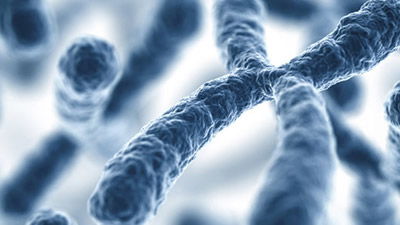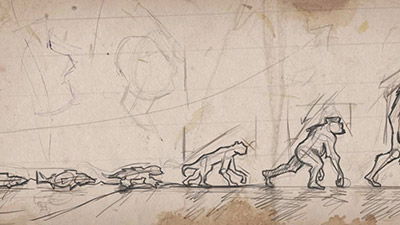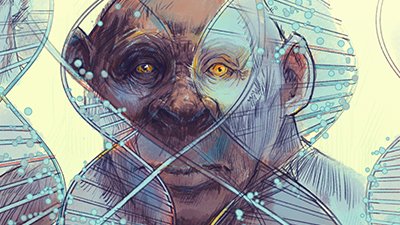
Paleoanthropologists Debate Identity of the Deerslayers
Paleoanthropologists debate identity of the deerslayers.
News Source
Bones belonging to several of southwestern China’s ancient occupants have anthropologists debating whether they represent a new species of human or not. Fossils discovered in 1989 in Red Deer Cave (Maludong) in Yunnan Province, together with a stone-encased partial skeleton found in 1979 in a neighboring province, have been subjected to careful anatomical analysis. The Chinese-Australian team publishing its findings in PlosONe1 suggests these bones belonged to a distinct evolutionary line of humans contemporary with modern humans, an opinion that has garnered international attention.
Red Deer Cave people, so named because their cave also contained bones from their extinct red deer dinner, as well as stone and antler tools of possible culinary use, read “true human” to everyone’s satisfaction. “They clearly had a taste for venison, with evidence they cooked these large deer in the cave,”2 says paleoanthropologist author Darren Curnoe. However, with carbon-dated charcoal in the cave—possibly left over from cooking fires—clocking in at (what we contend is an inflated) 11,500 to 14,500 years old, evolutionary anthropologists are trying to figure out how these people managed to still be alive and well in East Asia at a time when all other known species of humans, like Neanderthals, are believed to have disappeared. (Evolutionists generally place the end of the most recent Ice Age 10,000 to 15,000 years ago and believe Neanderthals disappeared by about 30,000 years ago, or at least before the last Ice Age ended.) Similar geologic strata elsewhere evidence “modern humans in southern China, who began to make pottery for food storage and to gather wild rice … full-blown farming,” Curnoe said. “The Red Deer Cave people were sharing the landscape with these early pre-farming communities, but we have no idea yet how they may have interacted or whether they competed for resources.”3
But the big question among anthropologists is really who these unusual-looking people were.
But the big question among anthropologists is really who these unusual-looking people were. Or, rather, how they got to be who they were. In some ways their bones conform to modern expectations, but not all. Curnoe says, “We have discovered a new population of prehistoric humans whose skulls are an unusual mosaic of primitive features, like those seen in our ancestors hundreds of thousands of years ago.” He adds, "These new fossils might be of a previously unknown species, one that survived until the very end of the ice age around 11,000 years ago. Alternatively, they might represent a very early and previously unknown migration of modern humans out of Africa, a population who may not have contributed genetically to living people.”4
Cranial capacity measurements were approximate but within human norms, with brains “moderate in size” compared to other humans from the Ice Age era. Investigators believe the frontal part of the brain was typical of modern humans although the parietal lobes may have been a little smaller. Like Neanderthals and Homo erectus, these people had prominent brow ridges. Their skull bones were fairly thick, and molars were large. The jaws jut forward but the chin is almost absent. “These are primitive features seen in our ancestors hundreds of thousands of years ago,”5 Curnoe explains. More unique features—traits not typical of either modern or known ancient humans—are a flattened face with a very broad nose and eye sockets, a jaw that could accommodate large chewing muscles, and an enlarged joint joining the jaw to the rest of the skull. Curnoe says, “In short, they’re anatomically unique among all members of the human evolutionary tree.” Curnoe’s team believes the Red Deer Cave people could have evolved independently, but they concede it is possible they represent descendants of a group of people that diverged from the “out of Africa” crowd and became geographically and genetically isolated, allowing them to develop these unique features.
Other experts are less impressed. Washington University anthropologist Erik Trinkaus considers Curnoe’s conclusions “an unfortunate overinterpretation and misinterpretation of robust early modern humans, probably with affinities to modern Melanesians [living people indigenous to the South Pacific] … There is nothing extraordinary.” Max Planck Institute’s evolutionary anthropologist Philipp Gunz concurs, “I would be surprised if it really was a new human group that was previously undiscovered. … Modern humans are a very diverse species … exceptionally variable, especially if you compare modern humans to our closest fossil relatives, the Neanderthals.” He agrees the skulls look unusual but notes actual measurements “plot very close, or even within, the modern human range of variation. I would say it’s not completely unexpected for a modern human … so my gut feeling is that this is not a new species.”
What will provide the definitive answer? DNA, of course. Gunz notes, “It should be fairly easy to extract DNA from these fossils, and then we will know for sure how related they are to us as a modern human species.”
Until DNA can be obtained, just how closely the genome of these people resembles that of early modern humans, Neanderthals, or Denisovans will remain anybody’s guess.
Efforts to extract DNA have been unsuccessful but attempts are ongoing. Until DNA can be obtained, just how closely the genome of these people resembles that of early modern humans, Neanderthals, or Denisovans will remain anybody’s guess. But one thing is certain, these people do not represent either a new or an old evolutionary line, just a line of people descended from Adam and Eve, and more recently from Noah’s family.
All survivors of the global Flood disembarked from the ark. After building a civilization in the plain of Shinar, their descendants dispersed from the region of the tower of Babel to spread through the world. Both the researchers and those commenting on the work note human appearance can vary greatly. Geographic isolation of a small population predisposes to development of unique characteristics. Paleoanthropologist Isabelle De Groote of London’s Natural History Museum adds, “It’s possible these were modern humans who inter-mixed or bred with archaic humans that were around at the time. The other option is that they evolved these more primitive features independently because of genetic drift or isolation, or in a response to an environmental pressure such as climate.”6
Like Neanderthal and Denisovans, these people who made tools and cooked deer were made in the image of God. Several factors tend to produce somewhat inflated results in many carbon-dated samples, such as Flood-related changes in the biomass of the earth and changes in the earth’s magnetic field. We can be confident the ancestors of the deerslayers and those of their farmer-neighbors migrated to the area we know as China less than 4,300 years ago, some time after Babel.
Further Reading
- Those Enigmatic Neanderthals
- “The Search for the Historical Adam” and Population Genomics
- Researchers Believe Modern Humans Gained Immunity Boosts from Neaderthals
- Doesn’t Carbon-14 Dating Disprove the Bible?
- Carbon-14 Dating
For More Information: Get Answers
Remember, if you see a news story that might merit some attention, let us know about it! (Note: if the story originates from the Associated Press, FOX News, MSNBC, the New York Times, or another major national media outlet, we will most likely have already heard about it.) And thanks to all of our readers who have submitted great news tips to us. If you didn’t catch all the latest News to Know, why not take a look to see what you’ve missed?
(Please note that links will take you directly to the source. Answers in Genesis is not responsible for content on the websites to which we refer. For more information, please see our Privacy Policy.)
Footnotes
- D. Curnoe et al., “Human Remains from the Pleistocene-Holocene Transition of Southwest China Suggest a Complex Evolutionary History for East Asians,“ PLOS, March 14, 2012, doi:10.1371/journal.pone.0031918.
- C. Choi, “Mysterious Chinese Fossils May Be New Human Species,” March 14, 2012, http://news.yahoo.com/mysterious-chinese-fossils-may-human-species-150805074.html.
- Ibid.
- Ibid.
- Ibid.
- J. Amos, “Human Fossils Hint at New Species,” BBC News, March 15, 2012, http://www.bbc.co.uk/news/science-environment-17370170.

Answers in Genesis is an apologetics ministry, dedicated to helping Christians defend their faith and proclaim the good news of Jesus Christ.
- Customer Service 800.778.3390
- Available Monday–Friday | 9 AM–5 PM ET
- © 2026 Answers in Genesis



